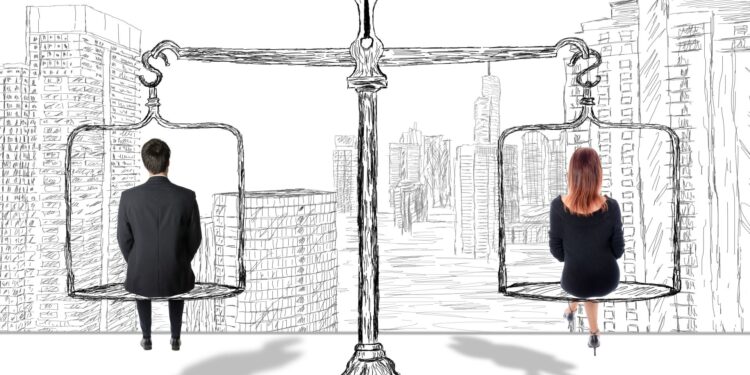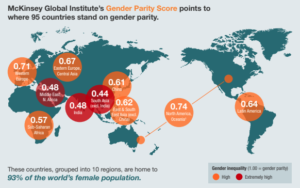Gender inequality is a pressing global issue with huge ramifications for human development.
Advancing women´s equality in the workforce can contribute to global growth.
McKinsey reports $12 trillion USD could be added to global gross domestic product (GDP) by 2025 if all countries matched their best-in-region country in progress toward gender parity, turning gender matters into a critical economic challenge.
Breaking down individual information from each of the world´s regions, the Global Gender Gap Index forecasts an estimate that each spot could add to their GDP by bettering their economic gender parity:
- United Kingdom: US$250 billion
- United States: US$1,750 billion
- Japan: US$550 billion
- France: US$320 billion
- Germany: US$310 billion
- China: US$2.5 trillion
Occupational gaps between men and women
In a research collaboration between the World Economic Forum and Linkedin, the report finds that men are distinctively under-represented in Education and Health and Welfare, while women are strongly under-represented in Engineering, Manufacturing and Construction and Information, Communication and Technology.
Information proves men are distinctively under-represented in Education and Health and Welfare, while women are strongly under-represented in Engineering, Manufacturing and Construction and Information, Communication and Technology.
We need more women in charge
Significant gender inequality persists in the workforce and in politics.
A World Economic Forum (WEF) research found that women represent fewer than 50% of leaders in every industry analysed – and in some fields, such as energy and mining or manufacturing, the representation of women is far lower, with women holding fewer than 20% of leadership positions.
The rate of progress for women has been slow, too: over the past decade, the proportion of female leaders has increased by an average of just over 2% across the 12 industries studied.













